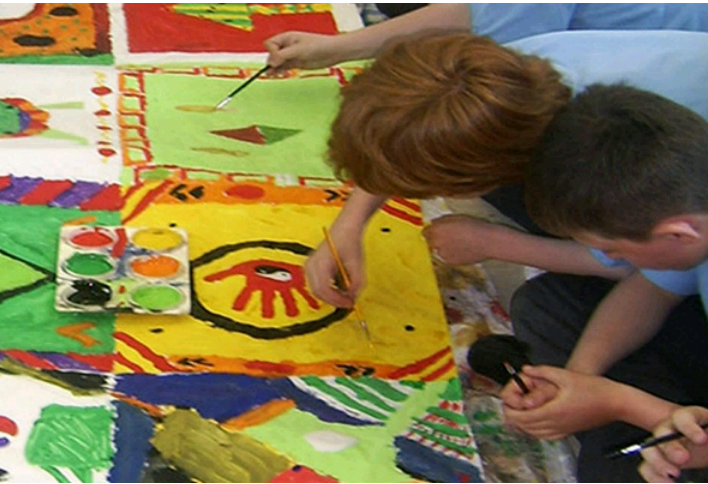Two of the most popular dyeing techniques in Africa are tie and dye and resist dye. In tie and dye, designs are first tied or stitched into the cloth, using cotton or raffia threads. In resist dye, dyers draw on the cloth using an impermeable substance, such as candle wax or paste made from cassava, a tuber. They then dip the fabrics into solutions typically made from vegetable dyes, which colour all but the covered areas. Indigo plants are used for deep blue dyes, while reddish-brown dyes are extracted from cola nuts, the camwood tree, and the redwood tree. Greens, yellows, and blacks are prepared from other sources.
Tie-dye techniques have been traditionally been used for centuries in the Hausa region of West Africa and have indigo dye pits located in and around Kano, Nigeria. Traditionally the tie-dyed cloth was richly embroidered in traditional patterns.
At Osun Arts, we teach children tie-tye techniques as part of our African Arts and Culture Workshops in schools.

